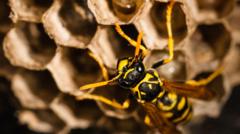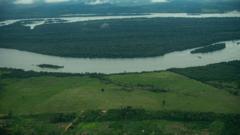A recent discovery of a radioactive wasp nest at the Savannah River Site (SRS) in South Carolina has sparked discussions about environmental safety and regulatory transparency. According to a report from the U.S. Department of Energy, the nest contained radiation levels ten times above the allowable limit. In light of this find, the agency has assured that the contamination is linked to "onsite legacy radioactive contamination" rather than a nuclear waste leak, emphasizing that there has been no negative impact on the public or environment.
The nest, which was located on July 3 by routine nuclear radiation inspectors, was positioned on a post adjacent to storage for millions of gallons of liquid nuclear waste. Investigators clarified that while the nest itself exhibited high radiation levels, the wasps within it were not in danger, as they would have been exposed to significantly lower radiation. Additionally, the wasps typically would have flown only a short distance from their nest, limiting the potential for external contamination.
Despite these assurances, environmental advocates such as Savannah River Site Watch expressed frustration with the lack of clarity surrounding the source of the radioactive contamination. Spokesperson Tom Clements voiced concerns over potential undisclosed leaks from the facility's remaining operational tanks. The Savannah River Site, which began operations in the 1950s to produce plutonium for nuclear weapons, continues to focus on materials for power generation today and is still home to 43 operational underground storage tanks.
In light of the incident, investigations into the legacy contamination at the site will likely continue, as both officials and environmental groups aim to ensure transparency and safety amid ongoing operations.





















